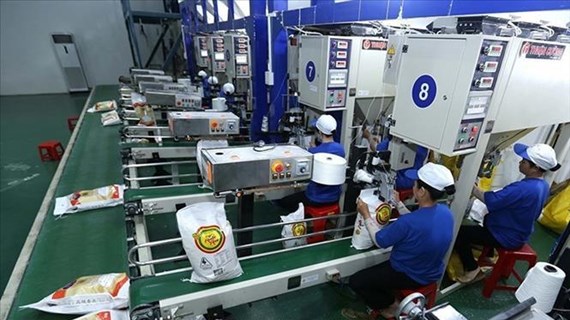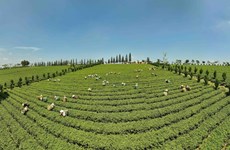Agriculture shifts towards commodity scale in northern mountainous region
Agricultural production in the northern midland and mountainous provinces has gradually shifted towards commercial scale over the past years, creating remarkable changes in the sector.
 Deputy Minister of Agriculture and Rural Development Le Quoc Doanh speaks at the conference (Source: VNA)
Deputy Minister of Agriculture and Rural Development Le Quoc Doanh speaks at the conference (Source: VNA)Hanoi (VNA) – Agricultural production in the northern midland and mountainous provinces has gradually shifted towards commercial scale over the past years, creating remarkable changes in the sector.
The trend was confirmed at a conference held by the Ministry of Agriculture and Rural Development in Hanoi on September 20.
Thanks to the shift, the regions recorded a 4.87 percent growth in yearly agricultural production value as compared to the national rate of 4.6 percent during the period 2014-2018.
A number of agricultural commodity areas have been formed such as tea, rice and fruit, among others. The northern midland and mountainous localities have the second largest orchard acreage in the country with 174,000 hectares, up 48,000 hectares as compared to 2004.
Regarding forestry production, the regions have a high forest coverage rate of 55.6 percent, making contributions to protecting local biodiversity and creating stable income for residents.
Director of Son La province’s Department of Agriculture and Rural Development Nguyen Thanh Cong said that the province has shifted from crops of low economic value to fruit trees, and paid special attention to developing agricultural cooperatives.
Besides, the province is giving support to local cooperatives to find markets for their products, he added.
Cong also recommended the Government design support policies for agricultural commodity production areas rather than for each province.
During 2014-2018, the agriculture ministry spent over 18.22 trillion VND (784 million USD) developing agricultural infrastructure in the area. The move has helped develop agricultural production, ensure sufficient water for cultivation, reduce flood for lower basin, and create more jobs for local people.
According to Deputy Minister of Agriculture and Rural Development Le Quoc Doanh, localities in the regions should promote agricultural restructuring in tandem with new-style rural area building.
Although the provinces have high forest coverage, they should improve forest quality as well as enhance processing so as to increase value for forestry products.
Doanh said special policies must be outlined for the regions, especially transport policy in order to improve the regions’ connectivity with other localities./.












